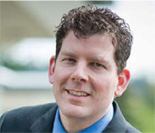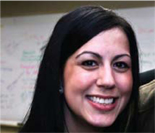Q: How do you define engagement and when in your career/life were most engaged?
By Raluca Manolache
 TJ Schmaltz, CHRP
TJ Schmaltz, CHRP
executive director of HR and payroll services,
District of West Vancouver
TJ Schmaltz started his career as a labour and employment lawyer in Vancouver before moving into the HR world; he has worked in a variety of roles, including working with BC’s Adult Corrections Branch and as director of labour relations and occupational health and safety at BC’s largest retailer. Recruited to his current role by the District of West Vancouver in 2009, he is also a part-time instructor with BCIT’s Business School and runs a management consulting firm that specializes in strategic human resource management practices.
“Employee engagement is not entirely tangible and can be difficult to define because so much of engagement is driven by employee perception. If you can create a feeling or sense among employees that they are connected to the organization and derive some level of fulfillment from being part of the organization, I think that is the heart and soul of engagement. Helping your employees feel they truly are contributing to the success and to the vision of the organization is part of that connection.
Our employees manage 16 different businesses and are spread out among almost two dozen workplaces, so it is easy for individuals to feel disconnected from the bigger organization. One of our goals through our employee engagement strategy is to help re-connect individuals to all corners of our organization. Our engagement strategy has four components to build a culture with: greater employee recognition, stronger internal employee communications, employee input and feedback flowing between all levels, and stronger engagement leadership at all levels.”
 Francine McInnis
Francine McInnis
director of talent management and OD,
CBC/Radio-Canada
Francine McInnis currently holds an interim role leading a cross-functional talent management and organizational development team for CBC/Radio-Canada. Building upon core training in corporate and clinical psychology, McInnis has a range of experience in a variety of domains ranging including: organizational diagnostics, leadership development, succession, coaching and mentorship, program branding and onboarding, as well as employee engagement, development and retention.
“Before we embarked on our most recent employee engagement initiative, we scanned the market for the different kinds of models and definitions out there. From a very technical stand point, the one we chose was one that was a very multidimensional approach. The way I would describe it would be akin to a “Head, heart and hand” model of engagement. With that there is more of a cognitive piece of engagement, which is “I believe in this organization and I see how I can contribute to its success”, so a very rational kind of piece of engagement.
However, there is also a very emotional piece “I can understand, I can get behind this organization”, but “Do I feel motivated, passionate and proud about doing the work for this organization?” which is very important to combine with the more cognitive piece. From a non-technical stand point, I think it is most effective to reflect on those people that are most engaged. Recent research has identified a potential engagement trait.”
 Kara Biles, CHRP
Kara Biles, CHRP
recruitment co-ordinator,
Canfor Ltd.
Kara Biles recently transitioned from a generalist HR role with Canadian Forest Products Ltd. (Canfor) to the recruitment co-ordinator, responsible for supporting Canfor’s recruitment and retention strategy. As the winner of the BC HRMA’s Rising Star 2011 Award, she also serves part-time as an instructor in the human resources management program at the College of New Caledonia.
“I would define engagement as a deep, positive connection that employees feel to their workplace that results in improved performance, commitment and loyalty to the organization. Engagement brings about a willingness to do more than expected, stronger working relationships, higher productivity and more satisfied clients. Engagement is driven by overall work environment and processes and I absolutely feel that it can only be affected by those with influence over them – leadership.
Reflecting on my current position and various roles in the past, leadership with positive influence over engagement can be effortlessly pinpointed. These managers provided me with control over how I do my work, gave me ample opportunities to use and grow my skill sets, and actively worked to establish and foster solid relationships between management and other staff. They outlined clear expectations, gave recognition and feedback and followed through on commitments every time. They also listened to and valued my opinion and retained open communication at all times.”
 Meg Burrows, CHRP
Meg Burrows, CHRP
HR advisor,
ICBC
As BC HRMA’s Rising Star 2010, Meg Burrows continues to evolve a career grounded in professional and volunteer initiative. Prior to her role with ICBC, Meg worked her way through increasingly senior roles with the BC Public Service Agency, with a solid focus on HR throughout. A strong believer in volunteerism, she has chaired BC HRMA’s CV membership and awards committee for the past two years.
“When I think of a time when I have been most engaged and I had been with a team that is most engaged, I think of a date and time where everyone has been united by a circle; it could be that we are all doing very similar work or very different work, but we are all working together towards an ultimate result. Those have been the times when I felt most engaged and also a part of a most engaged team.
In terms of the projects I have worked on, I can think of one in particular when I was working with two different people and we were all working to get one piece of the puzzle fitting. I remember one night when I came home at 9 PM and the three of us had a conference call to continue working on the project; we were so dedicated and committed to our goal and to connecting and moving things forward.”
 Tyler Cheyne, CHRP
Tyler Cheyne, CHRP
HR advisor,
Omicron
From 2008-2010, Tyler Cheyne was a driving force of the Winter Olympic spirit as VANOC’s volunteer training facilitator where his orientation and training skills readied countless other volunteers to welcome the world. As BC HRMA’s Rising Star 2012 award winner, a drive to learn and take on challenges, have led to significant challenges to Tyler role at Omicron within his first two years. Tyler’s innate desire to contribute has led to considerable volunteerism on BC HRMA’s behalf.
“In my opinion, engagement is when someone feels attached to their job in a very positive way. Engagement is the connection to the role they are in and the organization they work for. An engaged employee enjoys their day-to-day work and is on board with the company’s vision.
I would say I am very engaged right now and I think that is because of the role that I have. It is a very interesting and dynamic role where I get opportunities to constantly learn and grow. I can think of another time when I was most engaged. It was when I was a student at UBC and I worked part time at the Programming Resource Centre. I really enjoyed that job: it was very flexible; it was fun; and it was a great place to be.”








